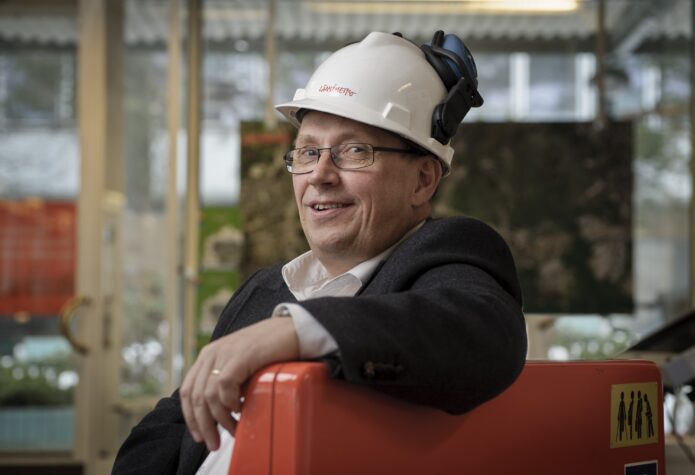Metro heads west

Länsimetro Oy is building a metro stretch westward from Finland’s capital city, Helsinki, to its satellite Espoo. This is the country’s largest infrastructure project. NIB has provided a EUR 120 million loan for its implementation.
The days are getting longer in Helsinki, but in the dark tunnel 50 metres under the seabed in Ruoholahti there are no signs of spring. In less than five years, bright orange metro cars will shuttle tens of thousands of passengers daily from Espoo to Helsinki through this tunnel.
“Excavation work was particularly challenging in this area as we are in the middle of a city and very close to the already operating metro line,” says Länsimetro Oy’s Timo Kotineva, who is in charge of supervising the site.
At the end of the bumpy road we see some lights. Different kinds of vehicles and machines are now casting shadows. Soon they start moving and we see a spray of concrete hitting the tunnel walls, giving them a smooth, grey cover.
The man behind the metro project
Matti Kokkinen is sitting in his office in Tapiola, Espoo. He is the in charge of the largest infrastructure project in Finland – the extension of metro traffic in the Helsinki Metropolitan Area from Ruoholahti to Matinkylä in Espoo via Lauttasaari.
Upon completion, the West Metro will transport over 100,000 passengers every day. The project includes the building of seven new stations, two tunnels each nearly 14 kilometres in length and the removal of around three million cubic metres of blasted rock.
Excavation work should be finished in 2013. After that all the stations will be built. When this is done, test runs will start.
Long-term money in demand
Such large infrastructure projects require not only technical competence but also financial resources. The financing of the project has caused some debate in Finland as cuts in state spending have threatened to leave some holes in the budget.
The current cost estimate for the West Metro is EUR 780 million. The state will contribute 30% of the cost, while the rest will come from debt financing. NIB will provide a loan of EUR 120 million with 30-year maturity.
“The city councils of Espoo and Helsinki decided already at an early stage that the project will be financed with debt assumed by the joint project company Länsimetro,” Matti Kokkinen says.
“We are aware that not all projects receive funding from NIB. We now know that Länsimetro Oy has passed the NIB filter, which sets strict requirements especially for environmental aspects,” he continues.
“Another advantage is the long-term character of the loan. Commercial banks can hardly fill that gap.”
Metro beats driving
The main environmental benefit of the project is the transfer of passengers from road to rail and the reduction of traffic congestion in the city centre of Helsinki.
Once the West Metro is completed, bus traffic from southern Espoo to the centre of Helsinki along the Western Motorway will be discontinued. Feeder buses will transport passengers to the metro stations. The ride from Matinkylä to Ruoholahti will take 16 minutes.
“The metro is convenient, efficient and environmentally friendly. This will attract people to using it,” Kokkinen explains.
“In the short run, the extension of the Metro line will, of course, cause some inconveniences for people who are afraid of the blasting. We try to mitigate this by informing the public as much as possible,” Kokkinen says.
The West Metro will open for service at the end of 2015.
